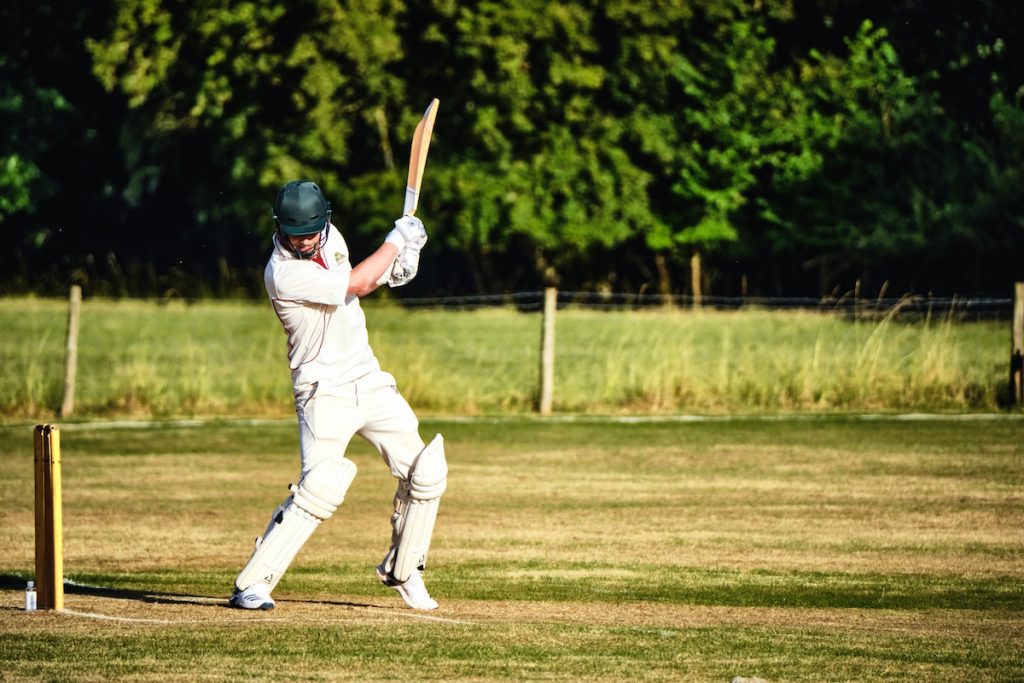In cricket, scoring is contingent on the number of runs scored and wickets that are taken (known in the game as outs).
On the field wicket, wickets are composed of three sticks or stumps that have two bails made of wood at the top.
Each team has a turn to bat and bowl. If a team is batting it, they try to get as many runs as feasible.

Running
When the batsman has hit the ball, particularly to an area that is empty or far off on the ground, they could decide to move between wickets in order to score runs.
There is a batsman at every side of the pitch and they’ll be running from their own end of the pitch until the other side.
If they are able to make it to the other side of the pitch , without the fielding team hitting the ball, one run will be added to the score.
This run also counts in the batsman’s (who struck the ball) personal score.
This method of scoring runs could continue as long as both batsmen go across the pitch before returning to their own pitch, it is considered to be two runs.
It is not necessary to run every time the ball gets hit; it is not required in the event that the players are concerned that they may not be able to get back to their spot in time before their team hits their stumps.
You can also score runs when the ball crosses the boundary line or passes over boundaries.
If the ball touches the boundary line, that’s equal to 4 runs. If the ball crosses boundaries, this amounts to 6 runs.
Collecting Wickets
However the bowling team’s primary aim is to take the batsman off or collect wickets.
The five primary methods of obtaining wickets are being bowled, caught, stumped, run out or leg before wicket.
If the batsman gets caught, it is when a fielder has caught the ball in the bowl before it struck the ground.
If the batsman has been bowled, two bails are crushed by a ball that has been bowled.
If the batsman’s run is out, they will fall short on the edge of their batting line.
one of the fielders on the team knocks the wicket over when the batter is running through the wickets.
If the batsman is stumped it is when the wicket-keeper takes the ball of cricket and throws it over the wicket prior to when the batter has reached the batting area.
In the end, if the ball strikes the stumps, even if it was not intended for the batsman’s pads it’s considered to be an unintentional leg prior to wicket.
When the game continues the batsmen’s team will have scored runs, while the fielding team has taken wickets.
For instance when the batting team scores 100 runs, and they have taken 5 wickets, then the score will be “5/100” or “five to hundred.”
Game Length
Different cricket tournaments differ in length and this is dependent on the tournament that is being played.?
For instance, if a game has 20 overs (1 over equals six balls) long the game will consist of 120 balls.
The team should try to get as many runs as they can within these balls, then they’ll change sides.
A second scenario is that the batting team could have 10 wickets or outs before they have completed the overs and has to change sides as well.
At the end of the day, generally the team that has the most runs prevails.
Cricket Game Officials
Officials of cricket games are referred to as umpires. Each match of cricket is played by two umpires.
The two umpires take charge of various spots on the field and one is behind the stumps, and one at the bowler’s side while the other is in charge in the middle of the pitch.
The cricket umpires have various tasks like taking decisions regarding whether there is a chance that a no-ball may have been played, the various circumstances where a bye might be granted, as well as the boundary of the pitch.
These types of decisions are vital in determining the outcome of a game of cricket and umpires change their positions at the end of each round for fairness, and to avoid bias from playing a significant part in the game.
Sometimes, umpires are also asked to utilize an Umpire Decision Review System when players question their decision-making.
Cricket Scoring Rules Summary
- If a player hits the ball and then runs to the opposite end of the field without being disqualified One run is scored.
- If both batsmen go across the field and return with success, there are two runs achieved.
- A ball that is able to cross an area that is bordered scores 4 runs. On the other hand, the ball that crosses the boundary is rewarded with six
- The aim of the bowling team is to collect wickets or to get batters out
- The methods to knock the batsman out is by being caught, bowled in the field, run out, stumped or leg just before wicket
- A inning ends when 11 batters are declared out, or when the specified amount of overs are hit
- Certain games last until a number of innings have been played, while other games are played with a restricted number of innings.
Digital Scoring on CricHeroes:
Technology has reached leaps and bounds and with CricHeroes, you can easily score your local matches just like International matches.?
You can easily generate scorecards, organize tournaments and also find yourself on different leaderboards.

As the editor of the blog, She curate insightful content that sparks curiosity and fosters learning. With a passion for storytelling and a keen eye for detail, she strive to bring diverse perspectives and engaging narratives to readers, ensuring every piece informs, inspires, and enriches.









